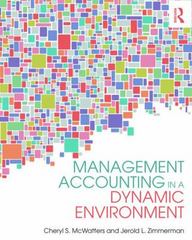Question
I have attached the fillable worksheet that goes with this and have highlighted what I cannot figure out and the worksheet displays ?wrong? on the
I have attached the fillable worksheet that goes with this and have highlighted what I cannot figure out and the worksheet displays ?wrong? on the incorrect answers. Morris Corporation is publicly owned, and its shares are traded on a national stock exchange. Morris has 16,000 shares of $2 stated value common stock authorized. Only 75% of these shares have been issued, and of the shares issued, only 11,000 are outstanding. On December 31, 2010, the Stockholder's Equity section revealed that the balance in Paid-In Capital in Excess of Stated Value was $416,000, and the Retained Earnings balance was $110,000. Treasury stock was purchased at an average of $37.50 per share: During 2011, Morris had the following transactions: Jan. 15 Morris issued, at $55 per share, 800 shares of $50 par, 5% cumulative preferred stock; 2,000 shares are authorized. Feb. 1 Morris sold 1,500 shares of newly issued $2 stated value common stock at $42 per share. Mar. 15 Morris declared a cash dividend on common stock of $0.15 per share, payable on April 30 to all stockholders of record on April 1. April 15 Morris reacquired 200 shares of its common stock for $43 per share. Morris uses the cost method to account for treasury stock. April 30 Morris paid dividends. April 30 Employees exercised 1,000 options granted in 2006 under a fixed stock option plan. When the options were granted, each option entitled the employee to purchase one share of common stock for $50 per share. The share price on the grant date was $51 per share. On April 30, when the market price was $55 per share, Morris issued new shares to the employees. The fair value of the options at the grant date was $6. May 1 Morris declared a 10% stock dividend to be distributed on June 1 to stockholder?s of record on May 7. The market price of the common stock was $55 per share on May 1 (before stock dividend). (Assume that treasury shares do not participate in stock dividends). May 31 Morris sold 150 treasury shares reacquired on April 15 and an additional 200 shares costing $7,500 that had been on hand since the beginning of the year. The selling price was $57 per share. June 1 Morris distributed the stock dividend. Sept. 15 The semiannual cash dividend on common stock was declared, amounting to $0.15 per share. Morris also declared the yearly dividend on preferred stock. Both are payable on October 15 to stockholders of record on October 1. Oct. 15 Morris paid dividends. Net income for 2011 was $50,000. Assume that revenues and expenses were closed to a temporary account, Income Summary. Use this account to complete the closing process. Instructions: 1.Compute the number of shares and dollar amount of treaury stock at the beginning of 2011. 2.Make the necessary journal entries to record the transactions in 2011 relating to stockholder's equity. 3.Prepare the Stockholder's Equity section of Morris Corporation's December 31, 2011, balance sheet. 
Step by Step Solution
There are 3 Steps involved in it
Step: 1

Get Instant Access to Expert-Tailored Solutions
See step-by-step solutions with expert insights and AI powered tools for academic success
Step: 2

Step: 3

Ace Your Homework with AI
Get the answers you need in no time with our AI-driven, step-by-step assistance
Get Started


